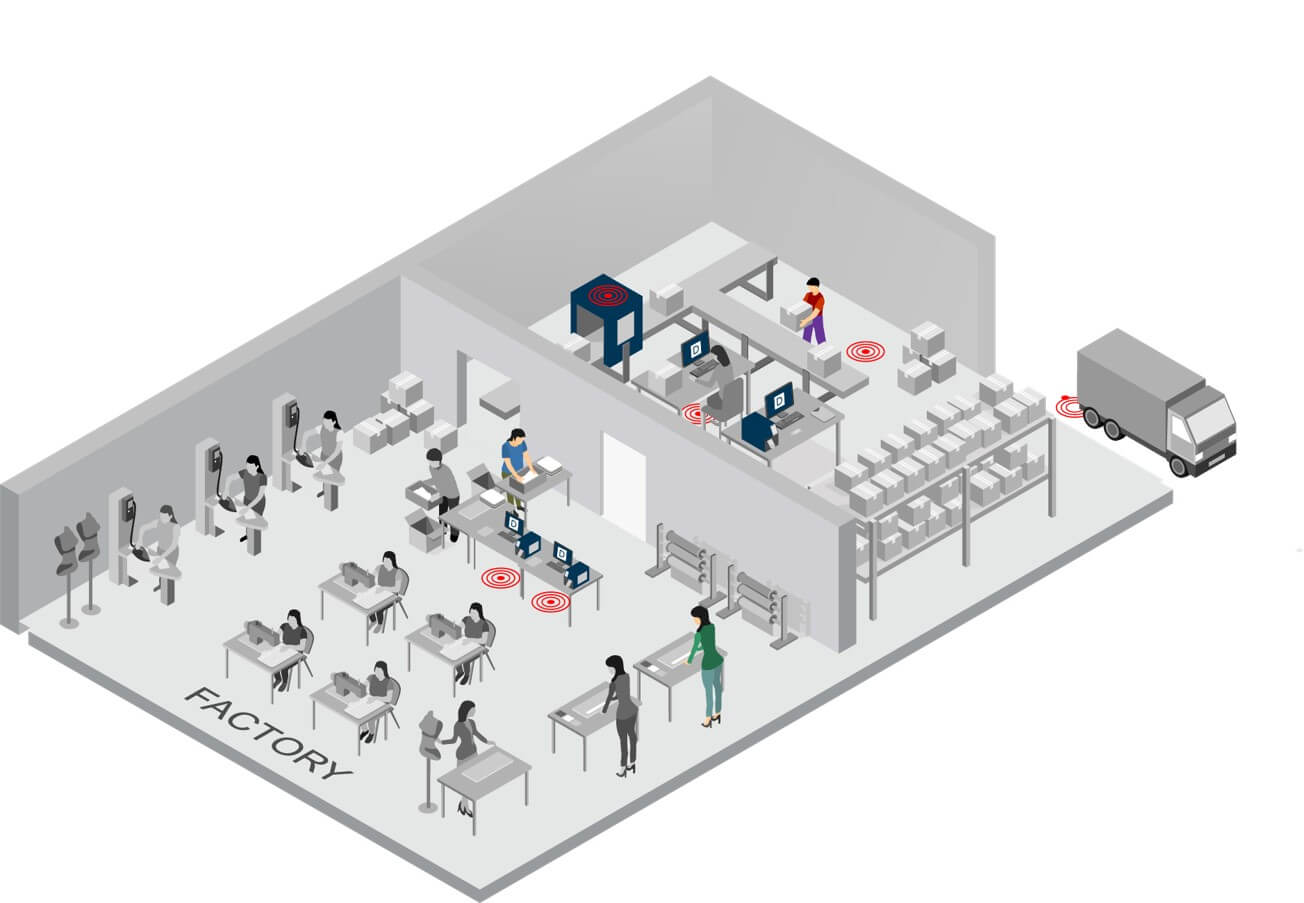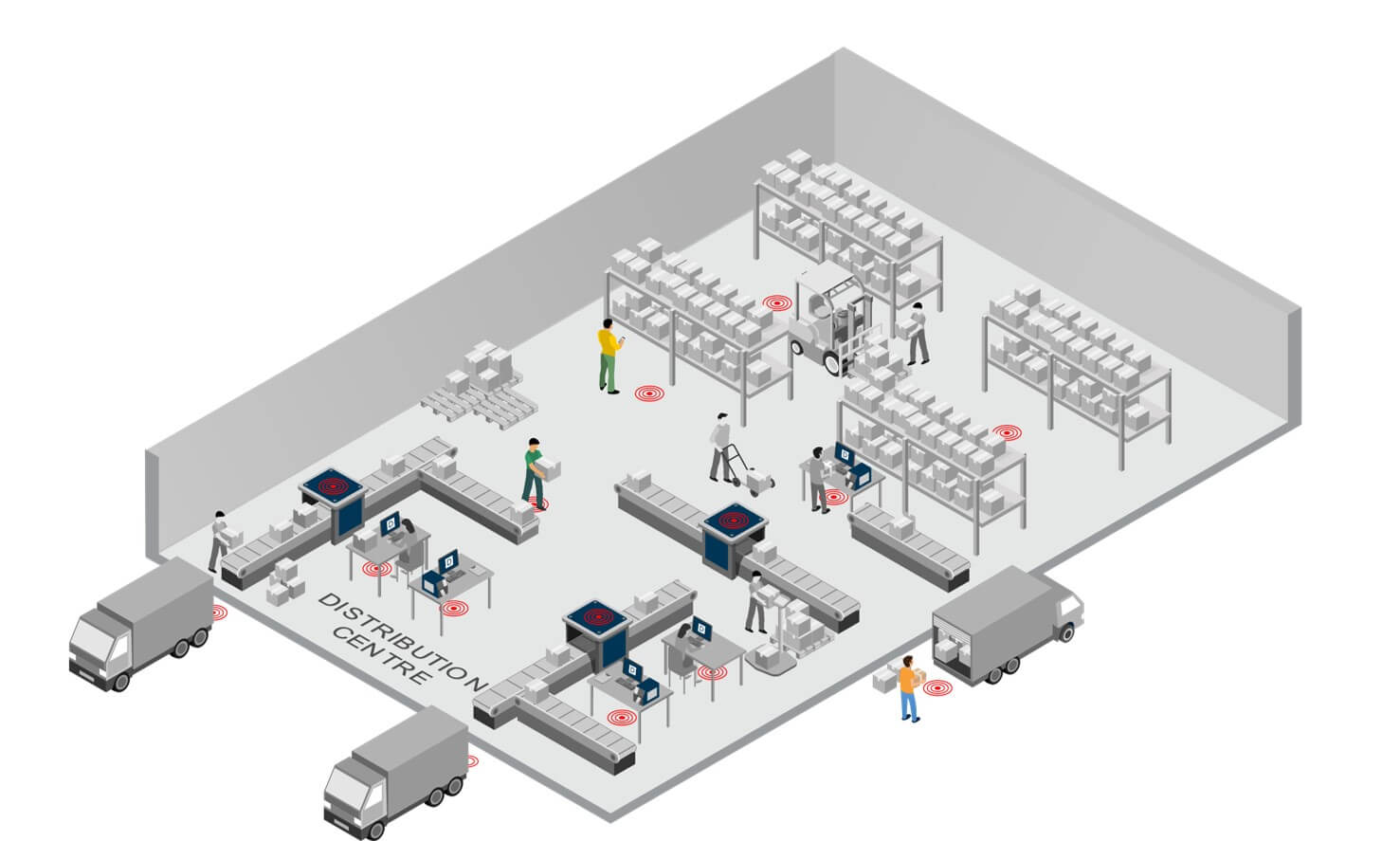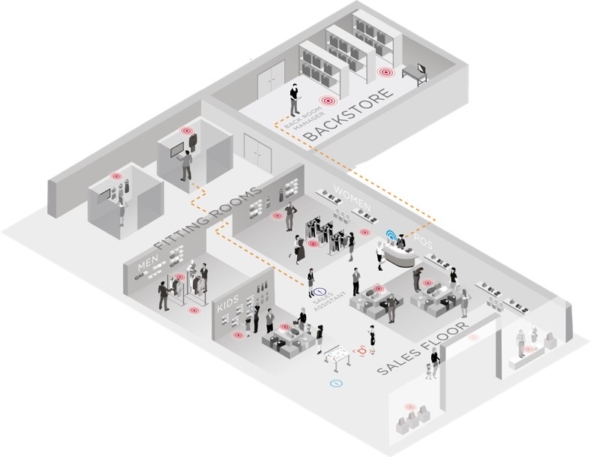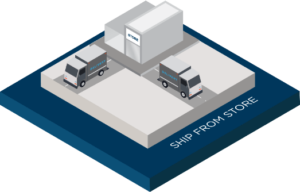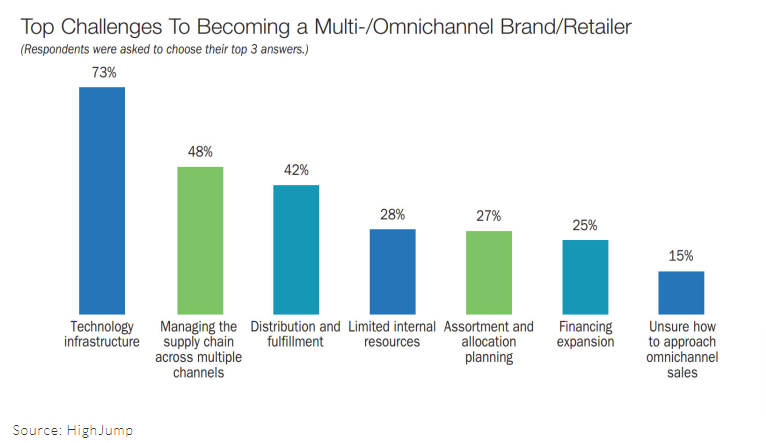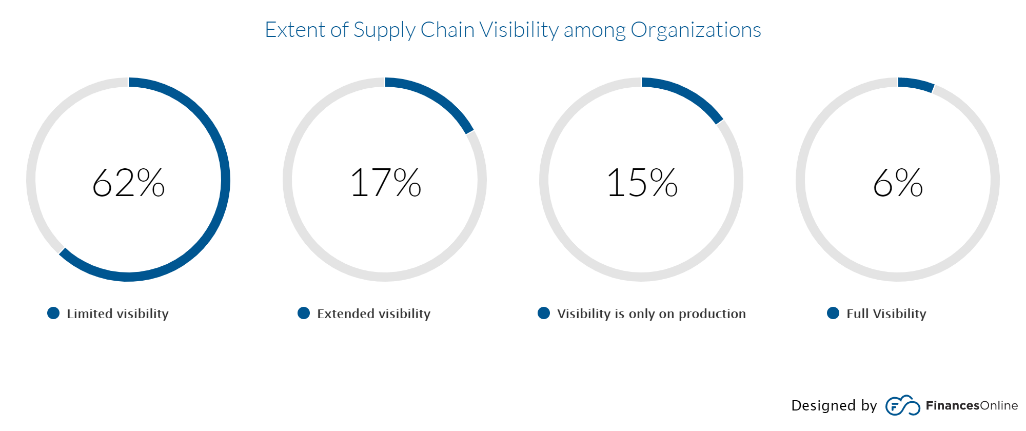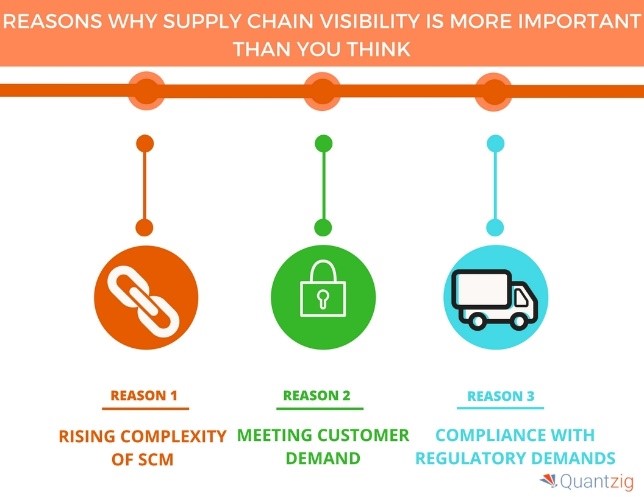Beauty retail is an industry at a crossroads. A sector resilient to crisis and change compared to other retail categories, cosmetic brands are beginning to feel the effects of the pandemic and ongoing industry changes.
In recent years, apparel and sports retailers have undergone digital transformations to stay competitive, and now beauty brands have an opportunity to follow suit. Read this eBook to discover how and why beauty retailing is set to transform into the industry of the future.
Beauty retail: An industry at a Crossroads
The apparel and sports retail industry have undergone mass change over recent years. Such retailers have undertaken digital transformation journeys in their store and distribution networks to adapt to digital-first customers and eCommerce competition. The beauty sector, however, is still behind the curve.
In most major beauty-industry markets, in-store shopping accounted for up to 85 per cent of beauty product purchases before the COVID-19 crisis – (McKinsey&Co) making the level of eCommerce penetration lower than in other retail sectors. While retailers in other categories have been forced to innovate and adapt in the face of falling brick-and-mortar sales, competition from eCommerce and direct-to-consumer models, brick-and-mortar beauty sales were more resilient.
But this is changing. Not only are eCommerce levels steadily increasing year-on-year, but the COVID-19 pandemic has accelerated this drastically, driving five years of change in a single year, according to
IBM. This leaves brick-and-mortar beauty retailers on unsteady ground. Beyond this, brands will have to navigate a more digital-centric environment and optimise margins to cope with reduced sales.
The good news is many of the challenges that are now facing beauty have been facing apparel or CPG for years. The digital solutions and strategies that have allowed apparel to adapt are well established and ready to deploy to the sector. The digital transformations that many apparel and sports retailers were forced to undergo will not only fit beauty retailers but will also help them solve older challenges. Beauty retailers may need to go on a similar journey to apparel, but the tracks are there to follow.
What is in the eBook?
- Beauty retailing at a crossroads
- Bringing beauty operations up-to-speed
- Accuracy redefining margins
- Fixing beauty’s shrinkage problem
- Catching up with the omnichannel trend
- Countering the Gray Market
- Becoming digital and analytics leaders

1- Adapting to the digital-first world
COVID-19 caused a huge increase in the role digital technology plays in our lives. Even for the already tech-savvy, work habits, social lives, exercise, and entertainment were all transformed into digital-first activities. Many of these trends existed before, but the pandemic accelerated this change by forcing many people to rely on digital channels and services more than ever.
The same is true for retail – online shopping and social media marketing are not new but have grown exponentially in the new normal, as customers stay at home and spend more time online. This means that, for all retail industries bar perhaps food, online channels have taken centre stage.
More than ever, customers are not only buying online, but they are also shopping online. What’s the difference? If we think of buying as the purchasing of a product, where the price is the primary factor, shopping is everything else – the experience, and the browsing and sampling of products, and ultimately the purchase decision itself. Traditionally e-commerce has always great for the former, but for actually browsing and discovering products its never been as good as in real-life. This is changing though, with digital technology like augmented reality (AR) allowing the customer to virtually try on products or see what they look like in true-to-life scale.
So, to adapt to this increasingly digital way of shopping Multichannel retailers or even pure-play brick and mortar retailers need to make more of an effort to reach their customers online. In the new normal, online is the focal point of the journey.
A webshop is one thing, but retailers need to make more of an effort to reach and meet their customers online. This means not only bringing products to customers with online and social media advertising but taking the entire brand experience online by engaging with customers on social channels and adapting to digital forms of experiences.
2- Understanding the new normal customer
While adapting to meet customers in the new environment is crucial, its just as important to really understand who the new normal customer is.
While they are of course the same people as before, habits and circumstances have completely changed – what customers want, and their priorities have completely shifted. As a result of this shift brand loyalty for many has gone back to square one, with more consumers changing and trying new brands this year than ever before. Whilst this puts retailers under even more pressure, it also presents an opportunity to attract and impress completely new customers.
But what has caused this shift, and who is the new normal customer?
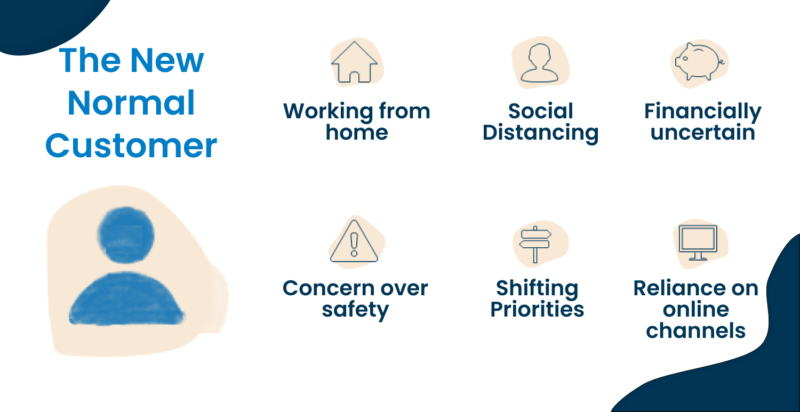
3- Embracing Omnichannel
Omnichannel retail, offering an integrated and consistent experience between online and offline channels, is not a new concept in the industry. But much like online shopping, omnichannel offerings have become exponentially more valuable since COVID-19. With the balance between digital and physical retail shifting, retailers offering a strong omnichannel experience are in a far stronger position than those who do not. Simply having an eCommerce site on top of stores (multi-channel) will put retailers in a better position as pure-play brick-and-mortar retailers, as they can take advantage of the increase in online shoppers and still be able to deliver to loyal customers who can no longer shop in-store. However, with pure plays being rarer than ever this is simply not enough anymore.
Omnichannel goes beyond this, by seamlessly integrating online and offline channels, allowing for offerings like click and collect (Buy-online-pickup-in-store/BOPIS), return-to-store and ship-from-store (BOSFS). The benefits of such a strategy go both ways. Customers get access to more available stock and convenient purchasing options; they can collect from stores (BOPIS and curbside) or can get products shipped straight to their homes. For retailers, omnichannel allows you to leverage stores as miniature distribution centres, cutting down on shipping costs while keeping struggling stores busy. With click-and-collect, the benefits are similar and allow stores to benefit from and serve online customers, Curbside pickup is a new type of click-and-collect that has become hugely popular since the pandemic as it keeps customers feeling safe and allows for social distancing.
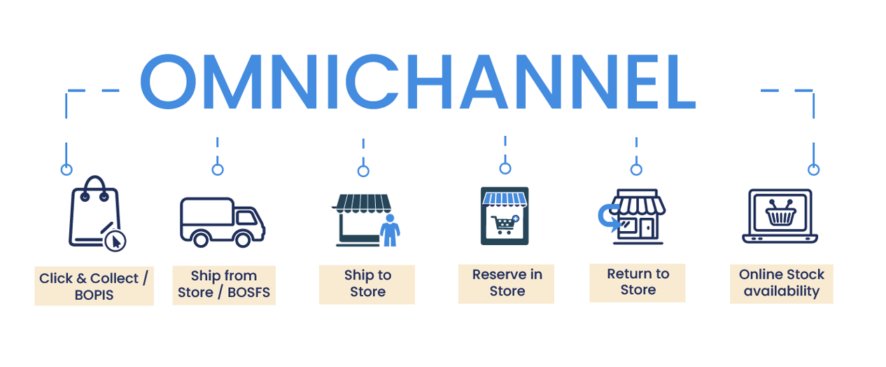
4- Optimising costs
As much as positioning for the new normal is vital for success going forward, the unfortunate fact is many brands will be struggling with the financial impact of COVID-19. As a result, optimising costs across the board is vital for retailers trying to weather the storm and stay open long enough to adapt to the new normal. Retailers feeling the worst of the financial strain of COVID will be forced to rethink their footprint in order to survive. Closing down stores and losing staff is always a last resort, but one the vast majority have been faced with this year, as less profitable locations are surrendered to ensure the survival of the brand. But what about retailers in stronger positions, those looking to optimise their costs in the long-term without hampering themselves or their customers?
For stores, improving the efficiency of in-store processes across the board can reduce operating costs in the long-term. Processes like inventory management (Processing inbound shipments, stocktakes, replenishment) point-of-sale and loss-prevention can all be streamlined with cost-effective technology. The focus should not be to manage these things more cheaply but to manage them more effectively. To use the point of inventory management, Detego has repeatedly found that increasing stock accuracy in our customer’s stores from an average of 70% to 98% means stores can run with far leaner inventories. If you do this at scale across your entire store network, it’s possible to reduce working capital by 10-15%.
In the supply chain too, there are huge opportunities to run more efficiently and reduce costs. The cost of handling and processing the flow of goods throughout the supply chain, particularly in Distribution centres, can be reduced by investing in technology like RFID and warehouse automation which reduces labour and handling costs. By improving the accuracy and visibility of their supply chain retailers can also reduce chargebacks and other costs associated with shipping mistakes. Finally, there are huge savings to be made by achieving full supply chain visibility – knowing exactly where individual items are (and where they’ve come from) allows retailers to fully optimise their supply chains reducing losses from shrinkage, counterfeits, and grey market goods.
5- Re-thinking data and digital for a post-COVID world
Retail, particularly sectors like fashion and beauty, has been facing the need for digital transformation for a few years. The rise of online channels, digital-first consumers, and the continuous advance of technology has meant brands can’t afford to stand still when it comes to how they run their businesses. Whilst understandably many brands are focusing on staying afloat in the immediate aftermath, COVID-19 did not stop this need for transformation – it accelerated it. Now there is a greater need than ever to ensure brands have the data and IT infrastructure to react to change and make the right decisions. With the sudden shift in the industry caused by the pandemic, retailers may need to revisit digital and analytics priorities but adapt them to a post-COVID world.
In times of uncertainty, accurate data, improved visibility, and effective analytics can make all the difference. We’ve already discussed how retailers with the right infrastructure (meaning accurate visibility over their products) are profiting from their omnichannel offerings. But having a mature tech stack can unlock tonnes of value that will be vital in the new normal. For example, item-level visibility and granular data in the supply chain not only allows for greater agility when dealing with supply and fulfilment but the data can be used for advanced analytics like demand prediction and inventory optimisation across store networks.
Want to explore this topic further?
Learn more about omnichannel with Detego:
Discover how retail RFID is changing the industry for good. This eBook will guide you through the top 10 needs identified by retailers to ensure sustainable success in the modern environment. Explore the common challenges preventing retailers from achieving their goals and learn how applying smart RFID-based solutions delivers consistently good results.
What is in the eBook?
The retail industry is currently ruled by change. The digital age has seen a huge growth in competition from e-commerce and a rapid shift in consumer preferences. This shift has altered the industry greatly with modern ‘omnichannel’ customers demanding to shop where they want, how they want and when they want. Delivering such an experience is a challenge, one that requires brick-and-mortar retailers to change.
In this eBook, we analyse the top 10 needs identified by retailers to ensure sustainable success in the modern environment. Within each of these needs, we identify the challenges often preventing retailers from achieving them, and how applying smart RFID-based solutions can deliver consistently good results.
Improving key metrics in stores
- How retailers use RFID for quick and efficient stocktakes and cycle counts
- Improving stock accuracy in stores
- How smart solutions are being put to use for item-level replenishment, ensuring products and sizes are always available to be sold.
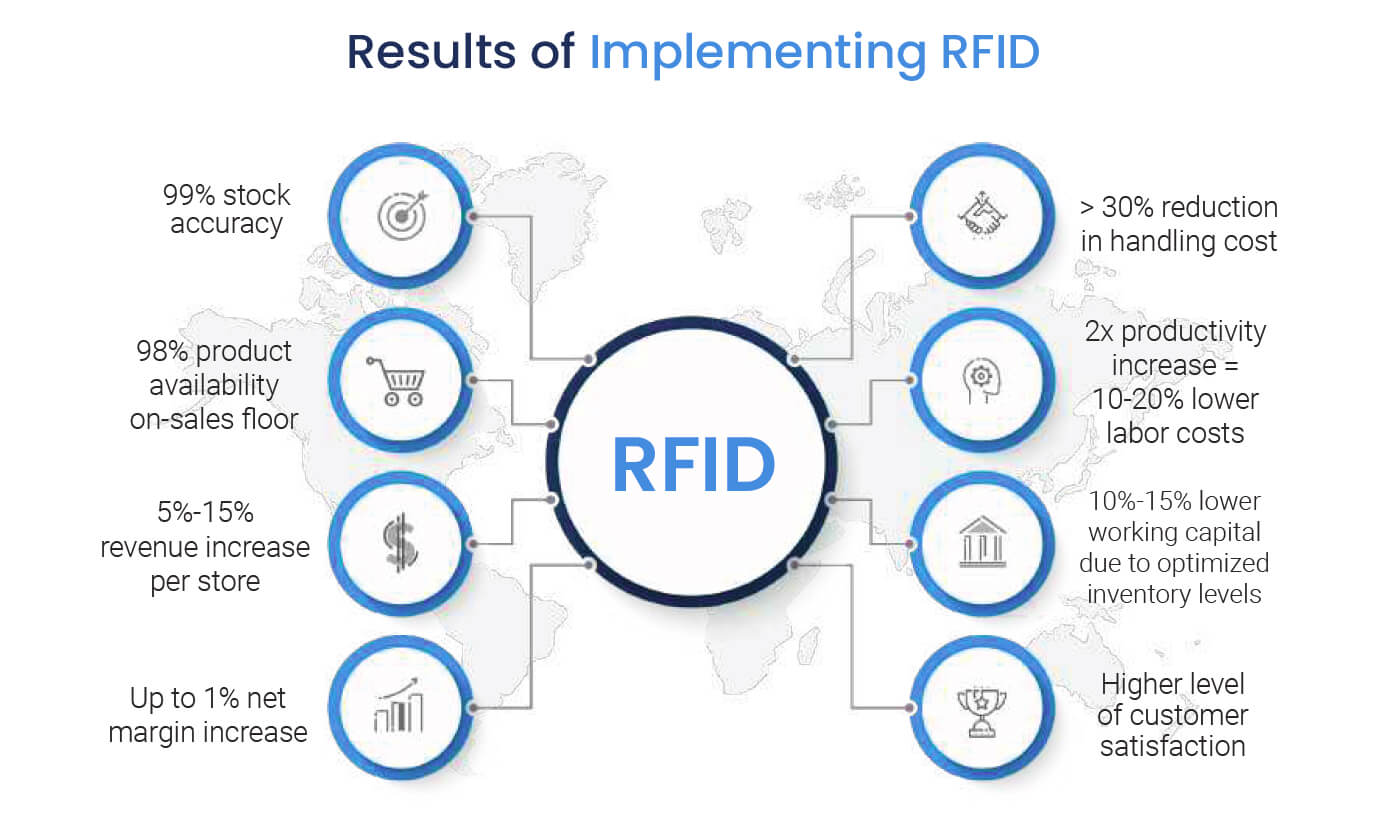
Delivering to customers with retail RFID
- How stores can reduce common customer friction points
- The relationship between RFID and effective omnichannel services
- The advanced retail RFID solutions that improve the in-store customer experience like chatbots and smart fitting rooms.
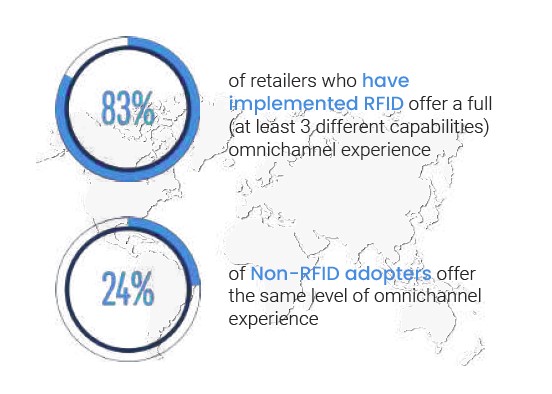
Optimising supply chains from source to store with automated processes
- How to achieve supply chain visibility with real-time info on the movement of products inside and across individual stores and distribution stages.
- How RFID is used to aid logistics at distribution centres, including automated processes like exception handling and order picking.
- What RFID means for retailers’ data and analytics capabilities, such as advanced supply chain traceability and new KPIs for stores and DC’s.
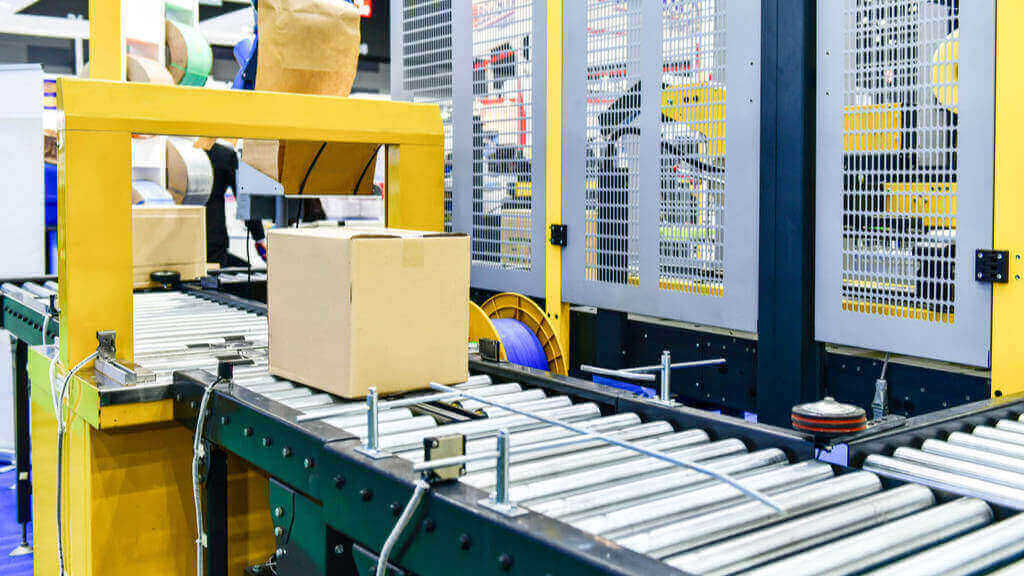
Protecting brands and products from theft, counterfeits and the grey market.
- How RFID can be used to monitor and reduce shrinkage, including theft, both in stores and across the entire supply chain.
- How brands are combatting counterfeit goods by tagging and tracing their products with RFID.
- What the Grey Market means for retail and how several major brands use RFID traceability to locate and stop the source of grey market products.
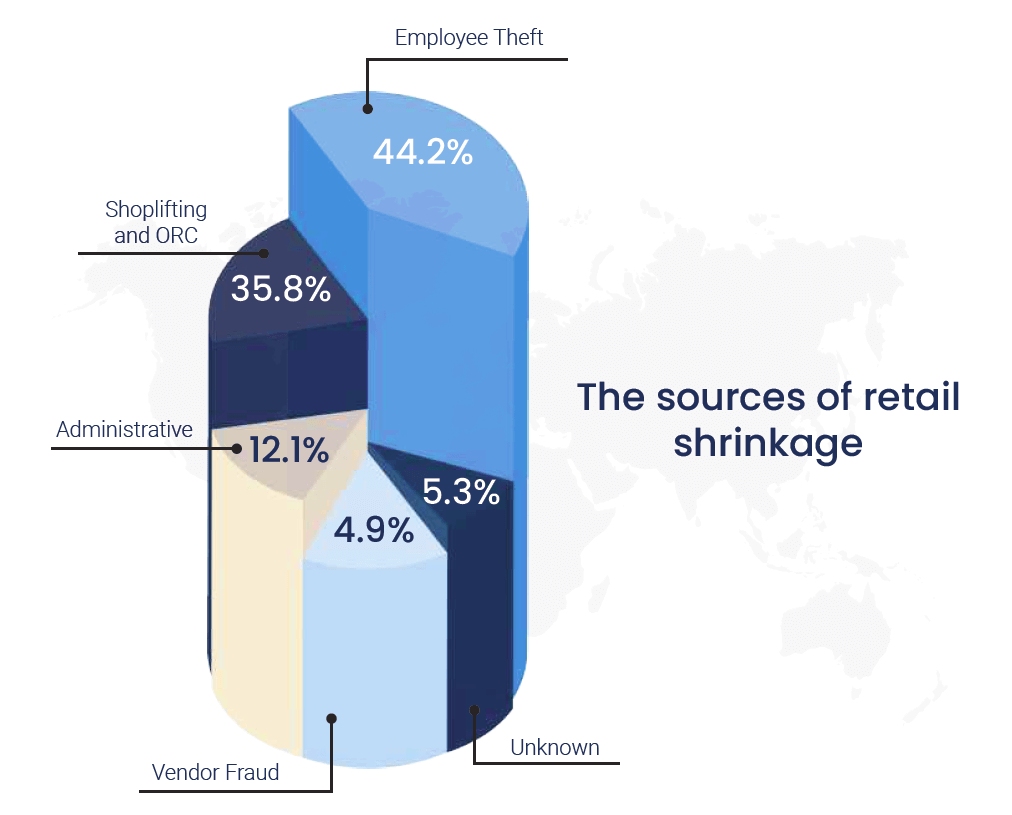
Summary of RFID in Retail
Radio Frequency Identification (RFID) is a growing force behind the scenes in retail. For the uninitiated, the technology involves using radio frequency (RF) to share information about an object’s unique identity (ID). An RFID reader can identify or ‘read’ hundreds of tags in a matter of seconds, at a distance of several feet. For retail, this reduces the reliance on barcodes for inventory management and opens the door to more advanced applications utilising real-time data.
While the story for RFID in retail began in stores, due to the dramatic increase in stock accuracy that it provides driving sales and setting a platform for omnichannel retailing, the potential for RFID in the supply chain has always been there. Now that many global retailers have implemented RFID in stores, they are beginning to leverage and unlock the power of RFID across the supply chain.
For the supply chain, RFID means accuracy, efficiency, and visibility, all of which have a big impact on operations.
The results of RFID in the Supply Chain:







RFID in each Stage of the Supply Chain
Factory
For a truly end-to-end view of the supply chain, RFID tagging must start at the factory. Items are encoded with an RFID tag at source, where they will be tracked from here to the point of sale. Once items are tagged and ready to ship, the first ‘read-event’ of the process takes place. The shipments are either put through an RFID tunnel (an automated tunnel fitted with an RFID reader) or read with a handheld reader. This outbound count ensures shipping and tagging accuracy, diverting any anomalies to be checked and fixed, and creates item-level ASN’s (advanced shipping notices) to send to the distribution centre, so they know precisely what they will be receiving. Having every item logged at this stage is also vital for creating visibility over the entire supply chain.
As most brands have anywhere from 10-100+ factories supply their DC, it is vital to ensure that the shipments are accurately accounted for to prevent errors further down the supply chain.
Distribution Centre
The distribution centre is the heart of any retail supply chain. Goods come in from the factory, and orders go out to, and occasionally come back in from stores, franchises, and customers. As it is logistically the most complex stage, it is here where the majority of processes are supported by RFID:
Supply Chain Processes with RFID

When goods arrive at either the distribution centre or the store, RFID readers are used to quickly count the shipments on an individual item-level. Because DC’s have far higher item throughput than stores, they often utilise automated RFID tunnels for this. Shipments entering the DC go directly onto a conveyor and are accounted for as they pass through the tunnel.
The software then compares inbound reads to the advanced shipping notice and updates the warehouse management system or ERP with accurate information. This process helps maintain the integrity of the stock system and also spots discrepancies early so they can be reconciled and fixed quickly (holding suppliers accountable for mistakes).
This is also where incoming returns are processed. Since RFID tags are unique and can’t be forged, DC’s using the technology can easily identify fraudulent returns, as well as processing the legitimate ones faster.





The packing process also utilises RFID when putting together orders and shipments. The process will vary depending on the DC, but RFID can support the process by a picker using RFID tables or audit stations to confirm the carton is correct by checking the actual contents against the picking list.
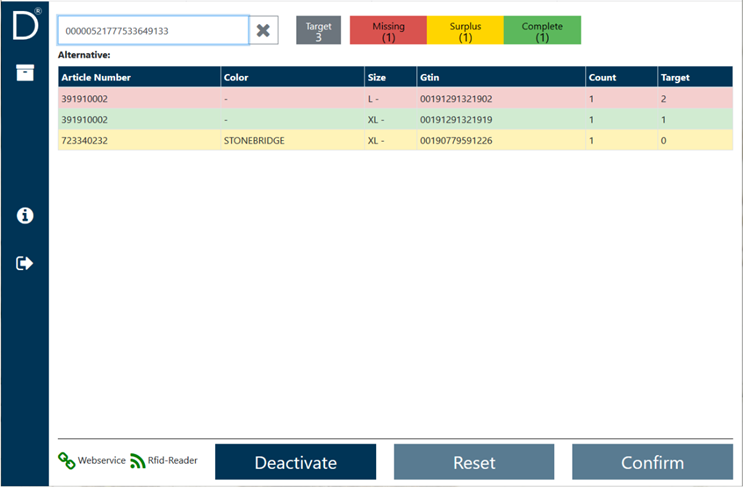

Finally, RFID is used to count, verify, and log all outbound shipments.
Goods pass along automated conveyor belts through RFID tunnels. Box barcodes (Using a target list supplied by the Warehouse Management Systems) are scanned at the entrance to the tunnel and an RFID reader in the tunnel reads the contents of each box. If the tunnel detects any differences against the target list, the conveyor system automatically diverts the carton for further inspection.
Outbound results are then sent to the WMS, to update the stock information for the DC. When the DC has processed all cartons from the target lists, the system creates an advanced shipping notice (ASN) for the store that will receive the goods.




The benefits of RFID in the supply chain
Now we have run through how retailers use RFID at specific stages in the supply chain let’s look at the results of doing so. We can broadly split these benefits into three areas:
Accuracy
Accuracy is often the first thing people think of when they hear RFID and with good reason. For the supply chain, RFID improves shipping and inventory accuracy by
1 – Performing more reliable (99%) inventory counts than traditional methods
2 – Counting on an item-level as opposed to an SKU level
3 – Being able to identify and fix mistakes at more stages of the process due to the ease and speed of RFID reads
The financial impact of improving inventory and shipping accuracy across a supply chain is huge, and can include:



Efficiency
The other great strength of RFID is the speed at which it can count and verify items or even entire cartons in seconds. With automated RFID tunnels and a conveyor system diverting any cartons with discrepancies, the efficiency of the DC is maximised, and not at the cost of accuracy. DC’s using RFID have a higher throughput, as they are simply able to process items and orders at a faster rate.



Visibility
The other major benefit of RFID supply chains is the complete visibility they have other individual items and the movement of merchandise. This not only means shipments and items are trackable in close to real-time, but the number of ‘read-events’ from source to store creates a huge amount of highly valuable data. This data produces useful KPI’s such as throughput, dwell-time, and DC performance. It also allows retailers to trace items back through the supply chain, which is hugely valuable in terms of brand protection and loss prevention.







Summary
RFID is used to accurately count, correct, and track all individual items and cartons across the supply chain. This starts in the factory where items are tagged at source, goes on to the distribution centre where orders are sorted and finally sent out to stores. Every time an item enters or leaves a stage of the process it is counted with RFID and all mistakes are identified and corrected.
The most notable benefits for supply chains using RFID come in the form of greater accuracy, efficiency, and complete visibility over the flow of goods. The increased accuracy of both inventory and individual orders can lead to top-line growth, fewer stock outages and the reduction of customer chargebacks for shipping mistakes. The efficiency increase makes supply chains more durable and increases overall item throughput and finally, the visibility of items allow retailers to optimise their operations and offer better services such as omnichannel purchase options.
RFID can be used for all inbound and outbound shipments, logging the contents of each order, and comparing them to the target list – which identifies shipping mistakes before they happen. RFID can also be used in the picking and packing process, counting the items in a carton as the DC staff picks the order, RFID software then confirms whether the order has been picked correctly before it is sent for outbound processing.
There are several types of RFID readers used throughout the supply chain. RFID tunnels are fixed readers built into a conveyor system, they scan the contents of cartons without needing for the carton to be opened and if they detect any discrepancies the conveyor will send the carton to an exception lane. RFID chambers are often used during exception handling, whereas audit tables can be used for this as well is the picking process. Finally, the handheld RFID reader is often used in stores or storage areas when staff need to move around a space to perform a cycle count.
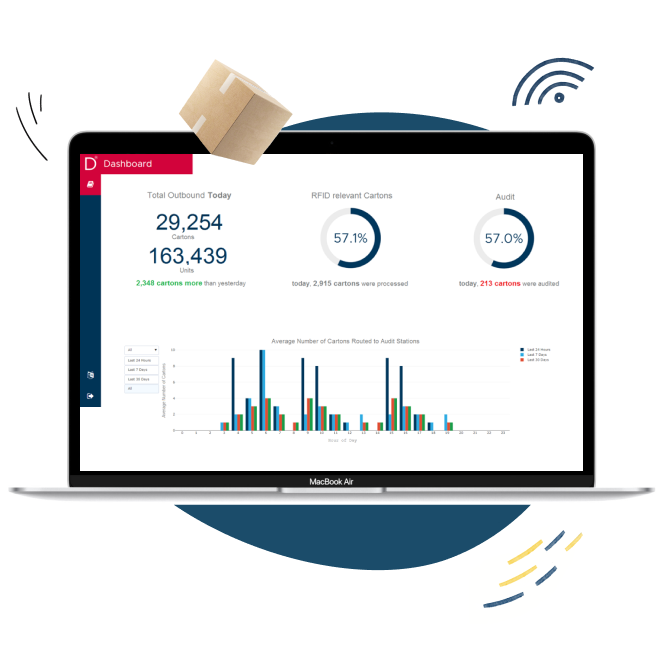
RFID software for the warehouse
The digital supply chain
Detego’s RFID-based warehouse software enables retailers to automate and dramatically improve their receiving, picking/packing and shipping processes in factories and/or distribution centers. These steps are vital parts of an end-to-end RFID solution, providing full visibility across the entire supply chain.
Want to see how RFID can transform your business? Book a demo today
Overview
Detego has installed its cloud-hosted RFID (Radio Frequency Identification) SaaS platform in Marc Cain’s new state-of-the-art Distribution Centre (DC). Detego delivered the solution alongside KNAPP, who led the overall development of the new centralised operation. The highly-automated Distribution Centre, based in Germany, uses RFID tunnels to verify inbound and outbound shipments without needing to open any boxes. The implementation of RFID in the Distribution Centre allows for over 35,000 articles to be processed on a daily basis, with 100% accuracy and significant improvement to efficiency and visibility of the supply chain.
The Challenge
Due to high demand online and in-store, Marc Cain decided to centralise their 6 regional warehouses into a single cutting-edge distribution centre, reinforced with the right technology to handle the high frequency of orders.
The solution
KNAPP AG led the design of the highly automated DC and they brought in Detego to implement an RFID solution – they needed to be able to efficiently validate shipments in and out of the DC with the efficiency and complete accuracy only possible with RFID
The Result
Utilising the Detego platform, Marc Cain’s DC verifies all inbound and outbound orders on an item-level without needing to open boxes. Staff simply place orders on the conveyor, and they pass through an RFID tunnel, which validates every item in the carton in seconds. Alongside highly sophisticated storage and packing processes implemented by KNAPP, the solution allows for 35,000 articles to be processed in a single day, with 100% accuracy.
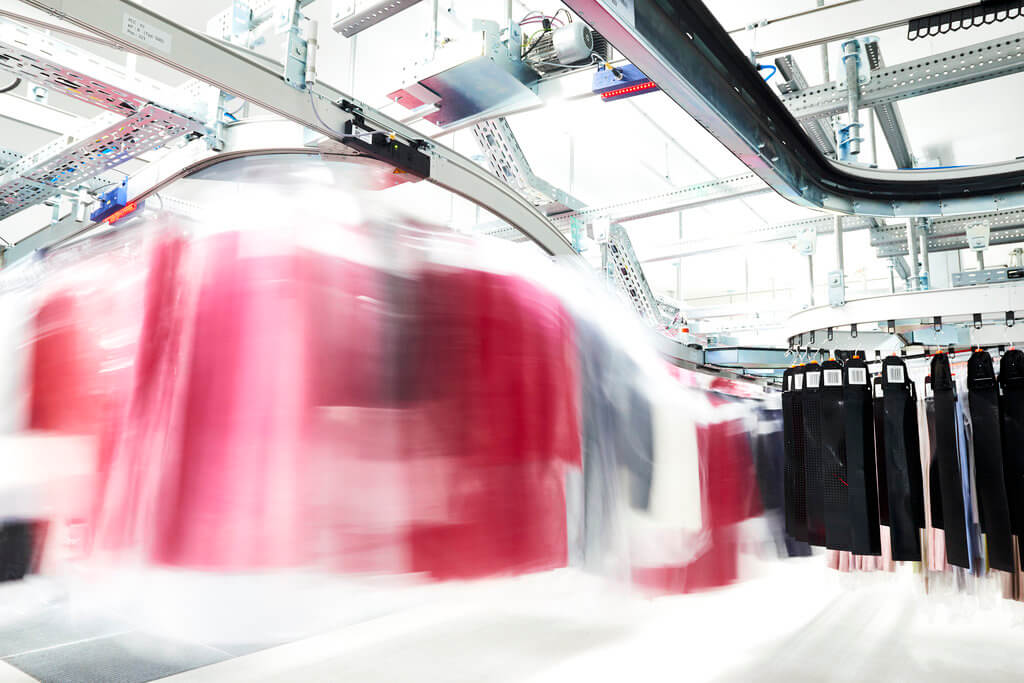
Building a DC fit for the future
Marc Cain is a worldwide premium brand for women’s fashion, operating predominantly out of Germany. After continued growth, the brand opted to move away from their regional warehouses to develop and construct a highly-sophisticated singular DC which boasts over 24,500m2 of usable area. Marc Cain’s logistics and solutions partner, KNAPP, brought in RFID specialists, Detego, to integrate the necessary RFID systems with their leading KiSoft WMS & WCS software. Doing so allows for automated item-level tracking of products both entering and leaving the Distribution Centre. These advancements have enabled Marc Cain to cope with their increased demand whilst ensuring complete accuracy and timely shipping of all orders.
“As we had already experienced good cooperation in another project with Detego, we have reached out to them when we started discussing the RFID request Marc Cain was looking for. Within a short time, we were able to integrate the state-of-the art platform from Detego in the solution we were providing to Marc Cain. With that extension, we can support Marc Cain to increase the efficiency and reliability inside the warehouse and have 100% content checks for every delivery leaving the warehouse”
Stefan Leichtenmueller – Customer Care Manager.
Automated RFID validation for complete accuracy
RFID is frequently being adopted in Apparel retailers’ Distribution Centres, as the speed at which it can process shipments at item-level is unmatched. Detego has a strong pedigree of deploying RFID solutions in the supply chain, being the first to develop an end-to-end software platform for retail. This experience, alongside their focus on the apparel retail sector, makes their advanced RFID platform a perfect match for KNAPPs leading warehouse automation systems and software for e-commerce, retail, and fashion. The decision to use RFID was made even more attractive by the fact Marc Cain have already adopted RFID-driven processes in stores, allowing them to gain additional value out of their digital garments within the supply chain.
“With this solution, Marc Cain can perform automated inbound and outbound RFID validation, ensuring complete accuracy going in and out of the Distribution Centre,”
Urs Konstantin Rouette, Managing Director, Technical Development, Production, Purchase & Logistics.
Staff simply place cartons on a conveyor and the boxes are taken through an RFID tunnel which counts and validates every individual garment inside the box, without needing a line of sight. All information is stored in the cloud-hosted Detego platform providing complete visibility over items entering and leaving the DC. Any cartons with discrepancies are automatically diverted to exception handling lanes where they are double-checked with High-Density Read Chambers (HDRCs) and subsequently corrected.
KNAPP also share additional customers with Detego and is one of many 3rd party logistics providers that Detego has recently partnered with to integrate their RFID platform. As the demand for visibility and operational efficiencies in the supply chain increase, more retailers are seeking RFID systems to complement their existing technology stacks from factory, to distribution centre and throughout store networks.
Take a look around the DC with project leaders, KNAPP:
Want the latest retail and retail tech insights directly to your inbox?
Webinar: Item-level reporting from source-to store
Digitisation and data go hand-in-hand. As retail supply chains continue to go digital, a wealth of item-level data on the flow of merchandise through the supply chain is unlocked. In the future, the winners and losers of supply chain management will be determined by who leverages this information more effectively.
Join Detego’s Chief Data Scientist, Simon Walk, as he presents the cutting edge of supply chain analytics and how digitisation is taking the guesswork out of retail logistics.
This webinar covers:
• Item-level tracking of Items along the Supply Chain to deliver accountability, visibility & traceability
• Effective traceability which combats supply chain shrinkage and counterfeit products.
• Using heuristic & Machine Learning based Algorithms to detect supply chain irregularities.
• Using dwell-time data to optimise operational & Supply Chain processes
• Analysing throughput data across factories, DCs and stores
🏪 What is in-store fulfilment?
In-store fulfilment, also known as ship-from-store, is an Omnichannel retail strategy that essentially involves utilising retail stores as miniature distribution centres. This allows eCommerce orders to be fulfilled and shipped to customers from either the primary DC or a nearby store. Having multiple options for fulfilment available means retailers can take some pressure off DC’s and offer customers more stock and faster delivery by utilising nearby stores.
📦 Could ship-from-store be a viable strategy during the COVID-19 pandemic?
The use of in-store fulfilment and ‘mini DC’s’ has been steadily growing for years, due to both the continued growth of eCommerce as well as the inherent business benefits listed below. In the current climate of COVID-19, with stores closed and the immediate-future uncertain, leveraging closed stores as DC’s could potentially help alleviate the increased pressure on eCommerce operations and help brands achieve business continuity during this time. The practicality of this will vary between brands and even countries, but its possible a reduced small team of staff could run as an effective warehouse during the coming months.
🚚 What are the advantages of using stores as miniature Distribution Centres?
- Takes some pressure off DC’s, meaning a brand can handle increasing eCommerce orders without needing to invest in additional DC’s
- Reduces shipping costs by moving distribution points closer to destination
- Increases delivery speed as orders are shipped from nearby stores
- Idle inventory that is sitting in stores can instead be sold through eCommerce – increases margins by preventing seasonal mark-downs.
- Ship-from-store is an effective and profitable way to prevent inventory stockpiling up at the wrong locations
- Retailers can offer customers more products i.e. not just inventory available at the DC
- Alternative ‘mini-DC’s’ offer fulfilment options if the primary DC is temporarily shut down or disrupted.
- Leverages staff during slow periods for stores or if stores are temporarily closed
- Offers more products/sizes to customers (see figure below)
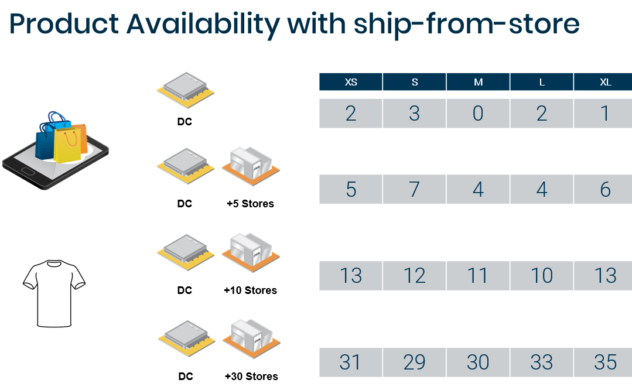
☑️ What is required to leverage stores as DC’s?
Whilst the benefits are huge, getting in-store fulfilment right is a fine balance and requires a certain amount of technology and digital integration across the supply chain. Retailers who attempt to offer ship-from-store (or any omnichannel capability) without these prerequisites will struggle. According to the Accenture study ‘Transforming Modern Retail’, Survey respondents that offer ship-from-store claimed that 31 percent of such orders triggered a split shipment, a result of not having the right foundations in place.
So, what do retailers need in order to utilise in-store fulfilment?
- Inventory Visibility – First and foremost, for cooperation across and between shopping channels, (i.e. for eCommerce to leverage inventory outside of their primary DC) brands need to have inventory visibility across their supply chain and stores. This view of stock needs to be unified between all channels and be as up to date as possible in order to achieve a ‘single point of truth’ for a brands merchandise.
- High Stock Accuracy – Having visibility over all of a brands merchandise is a start, but if this information is not highly accurate, cross-channel initiatives like this one will be fairly ineffective. Retail store inventories can be as low as 70% accurate when it comes to item-level product information. If this is the baseline for ship-from-store, it will result in either split shipments or cancelled orders – resulting in high costs and disappointed customers. For Omnichannel options like this, accuracy needs to be near 99% to confidently offer advanced purchasing options to customers.
- Investment in Stores – To facilitate in-store fulfilment a certain amount of investment needs to be made for stores. This may involve slightly altering the layout of a store, or hiring extra staff, depending on the business. More crucially, investment may need to be made in technology to achieve the accurate inventory visibility required to offer ship-from-store. This may include advanced inventory management technology like RFID.
- Maintained Store Inventory levels – Once this is in place and retailers are utilising in-store fulfilment, care needs to be taken to maintain the balance of store inventory between stock available to be used for eCommerce fulfilment and stock that is available for sale in the store. This is a fine balance to maximise sales between both channels. Retailers must ensure ship-from-store orders do not cause out-of-stocks for the brick-and-mortar store that is fulfilling them.
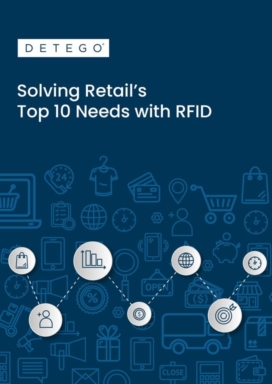
eBook
Solving Retail's Top 10 Needs with RFID
Discover how retail RFID is changing the industry for good. This eBook will guide you through the top 10 needs identified by retailers to ensure sustainable success in the modern environment. Explore the common challenges preventing retailers from achieving their goals and learn how applying smart RFID-based solutions delivers consistently good results.
Want the latest retail and retail tech insights directly to your inbox?
Complete Supply chain visibility was once an optional bonus for retailers, but in the modern industry it is becoming more and more of a necessity.
Whilst in the past, limited tracking of shipments in the supply chain was commonplace, in the modern environment with its more complex supply chains, delivery options and increasing customer expectations, retailers need to do more.
This isn’t just us saying so, retailers recognise this too. According to a report by Zebra Technologies, 72% of retailers are working on digitizing their supply chains in order to achieve real-time visibility.
What Is Supply Chain Visibility?
Having visibility means being able to accurately track products and shipments throughout the supply chain, from the manufacturer, to the distribution centre and finally to the store. Having this visibility prevents shipping errors, improves operational efficiency and allows retailers to leverage products to service their customers better.
Why Do Retailers Need Visibility?
Managing supply chains effectively is always a priority for retailers. But as these supply chains get bigger the challenge becomes more daunting. Visibility is needed to align such large operations, and this is before you add new pressures like omnichannel, traceability and online orders.
Additionally, supply chain visibility is arguably even more important in ecommerce than for pure-play brick and mortar retailers. Not only do you need to know exactly what stock the fulfilment centre has, but what stock it is due to receive and when. And since pure-play brick and mortar retailers are now few and far between , this now means that most retailers’ supply chains need to be more advanced and transparent than previously required.
This is before mentioning the divisive omnichannel word, which often requires even greater transparency and synergy between stores and distribution centres and includes multiple delivery options.
There are also more classic supply chain challenges that can be helped by achieving visibility. General inefficiencies and inaccuracies can be reduced by adding more checkpoints throughout the supply chain – particularly when these are done at an item level, and not shipment or carton level.
Adding this visibility also makes better communication between different stages of the chain possible, which leads to smoother operations. Having visibility at an item-level also makes traceability of items through the supply chain possible. This can make a massive difference in combatting supply chain shrinkage, and in some cases the grey market.
The ‘New’ Challenges:
Multi/omni-channel businesses – It seems like an age ago, but traditional retail supply chains went in one direction and to one place – stores. Now almost all retailers also run their businesses online meaning their they operate on multiple sales channels, therefore, their supply chains service far more destinations than before.
Multiple delivery options – A relatively recent challenge created by the growth of online and the already mentioned omnichannel purchasing options. Retailers want to offer their customers as much stock and as many purchasing options as possible, but without the technology to support it, this can cause problems. In an Accenture survey, respondents claimed that 31 percent of their Ship from Store orders triggered a split shipment.
Customer expectations – Customer expectations has shifted. In a 2019 report, it was found that Half of shoppers reported abandoning a purchase due to a lack of cross-channel buying options. This is a major impact on sales, and many retailers are starting to adapt to the change in expectations.
The Old Challenges:
Supply chain inefficiency – Supply chain inefficiencies and miscommunication through “Chinese Whispers” are costing UK businesses over £1.5bn in lost productivity according to analysis of industry data from Zencargo.
Supply chain shrinkage – According to the National Security Survey, businesses in the United States lose $45.2 billion through inventory shrinkage a year. Whilst retail stores make up the majority of this, supply chains still experience large amounts of inventory shrink, particularly when they have no visibility of products.
What are the benefits of having supply chain visibility?
-
Better customer service
-
Improved inventory control
-
Shorter cycle times
-
Smoother operational processes between stores and DC’s
-
Better data for more intelligent business decisions
-
Reduce out of stocks
-
Track and trace products
-
Offer effective omnichannel services and delivery options
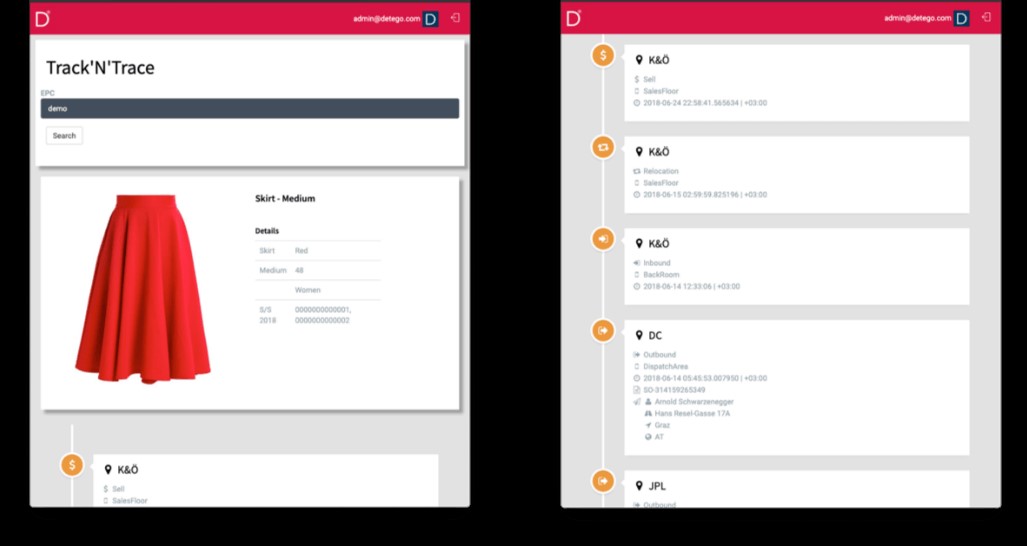
How Do You Achieve Supply Chain Visibility?
-
Implement a system that works at an item-level (not whole cartons)
-
Accurately track products at as many points as possible during shipping
-
Inbound and outbound counts at every stage of shipping
-
Implement effective exception handling
-
Use a cloud-based system to integrate all stages of the supply chain and achieve as close to a real-time view of merchandise movement as possible
-
Send advanced shipping notices (ASN’s) so warehouses and stores now exactly what they’ll receive
-
Use this visibility to enable traceability of each item throughout its journey
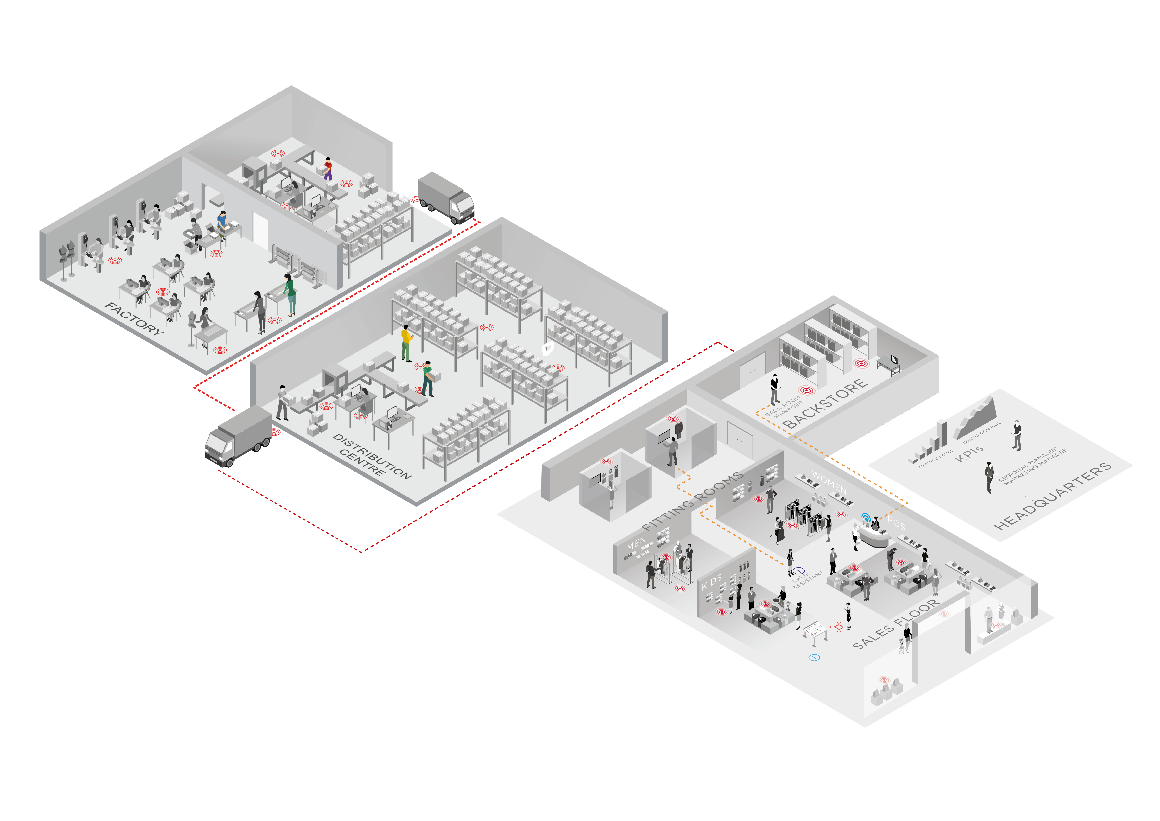
The Detego Platform allows retailers to gain complete visibility over their operations
If you’re looking for a solution or partner to help achieve better supply chain visibility, consider our platform!
Using RFID item level-tagging, the cloud-based Detego platform gives each individual item a unique digital identity. Items are then tracked from factory to shop floor using radio frequency identification (RFID) methods. RFID makes this possible as inbound, outbound and even exception handling can then be done through RFID reads – which are fast, accurate and can be done without opening cartons.
Since RFID works on the individual item-level, the result of this is complete visibility of the supply chain. The platform utilises the IoT to create a complete overview of every single product in the supply chain, as its cloud hosted this can be close to real-time and is the ‘single point of truth’ for the entire business.
Want the latest retail and retail tech insights directly to your inbox?
We say it all the time, but effectively running a large retail business is challenging, and it is getting more complex by the year.
Even ignoring COVID-19, the highly competitive nature of the industry means retailers must always be pushing forwards, constantly improving their offering, and ensuring margins are optimised to the nth degree.
Managing a full store network is hard enough, but now retailers must operate online channels and even blend operations to offer services like click-and-collect.
The need to manage increasingly complex operations in better and more innovative ways has led retail down the path of digital transformation.
The digitisation of stores and supply chains delivers one of the most crucial requirements of effective modern retailing – product visibility. For retailers who can achieve a single unified view of stock, meeting the high standards of customers and shareholders get a whole lot easier.
Let’s explore the new holy grail of retail – A Single Stock View
What is a single stock view?
A single point of truth in retail means having a single view of stock across the business. It means stores and distribution centres aren’t islands of merchandise that are clunkily attempting to share their version of stock information with one another as best as possible.
Instead, at the foundation of the business is a unified view of every single product. Because this view of stock covers the entire network, items can move between stores and DC’s and remain in line-of-sight the entire time. This has huge benefits for individual operations and the business as a whole.
Doing this requires the right digital technologies. RFID enables retailers to track their products with pinpoint accuracy, and cloud-based infrastructure and The Internet of Things allows you to build a digital view of products, and easily share this data across the organisation.
A single view of stock must be:
A single point of truth for retail inventory must be:
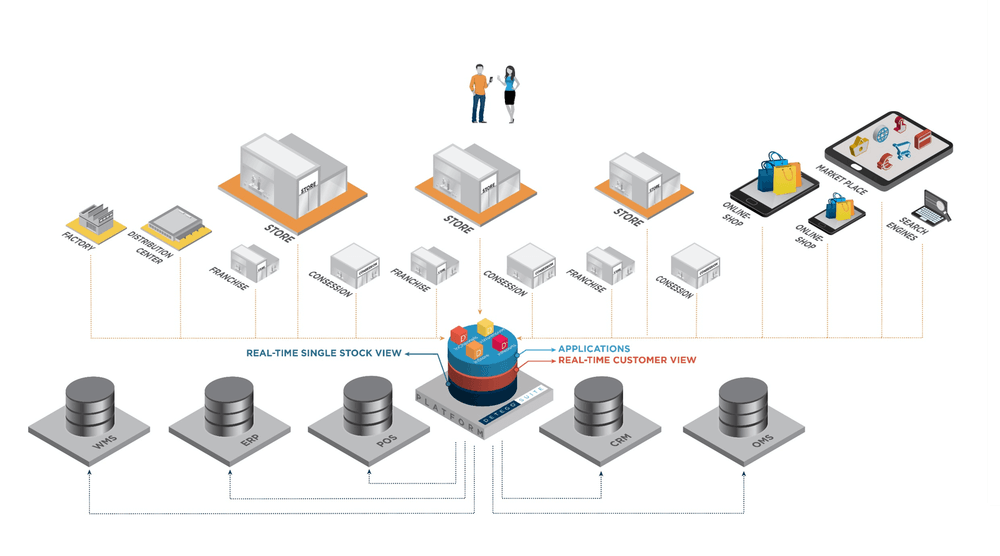
What are the benefits of a single stock view?
How do you achieve a single view of stock?
So, what does it take to gain this reliable and complete view of stock?
A single view of inventory starts with a single item. By giving each item an RFID tag, you are essentially giving it a unique digital identity. This means, using regular RFID reads and sensors, you can easily track the item as it moves along the supply chain.
Once it has arrived in a store, the stock becomes far easier to count, monitor and control. Because all this information is stored centrally in a single place, the individual item can be seen by the online store (and its customers) and even neighbouring stores and DC’s.
This transparency boosts efficiency and makes cooperation between different arms of the retail operation far easier to manage.
With RFID in place, you can verify and track your products on an item-level, giving you a complete digital view of every individual item and every single item-movement, in real-time.
But to get every step of the operation singing off the same sheet requires supporting software that is:
- Cloud-Based
- Utilises the Internet of Things
- Is End-to-End, covering from the factory to the shop floor
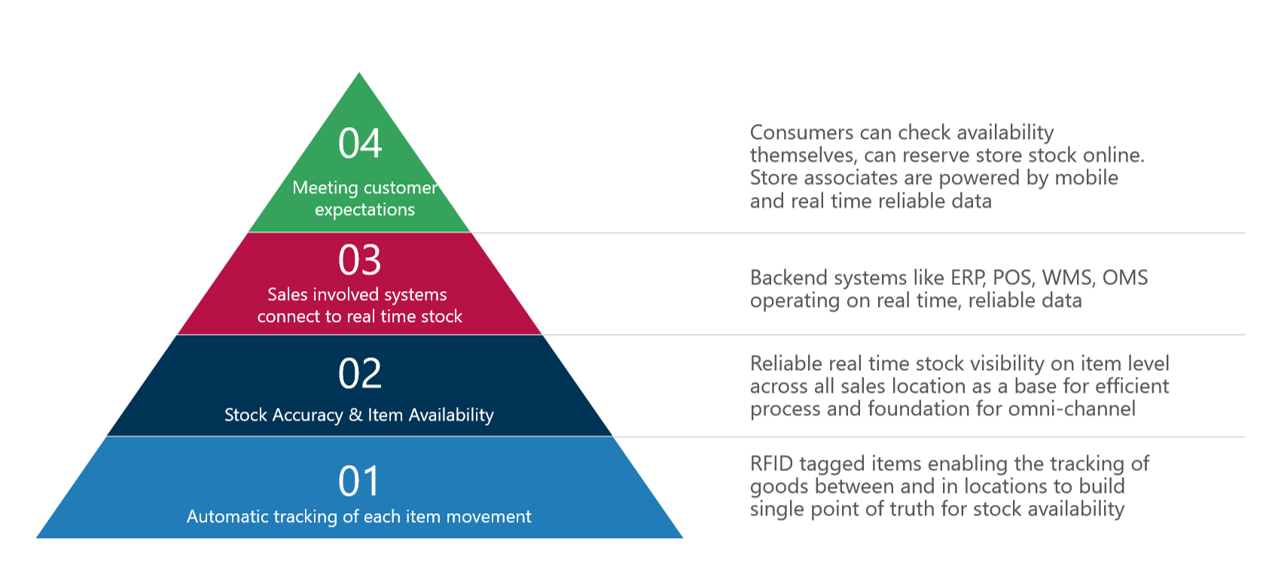
The Detego platform is the single point of truth for retail inventory
The Detego platform puts all this together and delivers a single stock view that can be counted on. Using RFID, we effectively digitise every single product in the supply chain and the store network. The information can then be fed into existing systems, such as ERP and OMS. The Detego platform covers every step of the item journey, from the factory to the distribution centre to the store. This delivers all the benefits mentioned above, and our in-store application guides store staff to effectively capitalise on this complete view of store inventory.
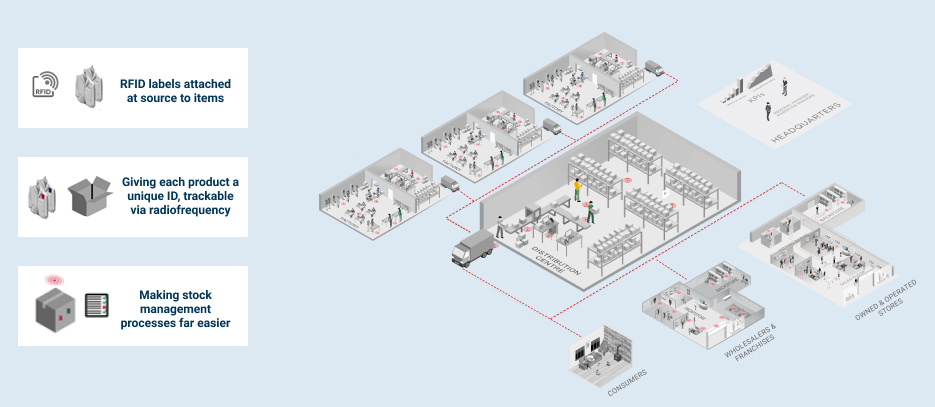
‘Detego is our “Single point of truth” in terms of in-store inventory. As a result, we are able to improve our omnichannel services such as click & collect, returns from e-commerce in the store or directly deliver to consumers from the store in a very efficient way. These are exactly the services our consumers expect today.’
Tobias Steinhoff, Senior Director Business Solutions Sales Strategy and Excellence, adidas
The retail environment has never been more demanding than it is today, thanks to fierce competition, the growth of e-commerce, and consumers’ high expectations for seamless shopping experiences. It’s a situation made even more difficult by a lack of inventory visibility, the complexity of supply chains and the sheer variety of products brands are faced with.
While retailers have access to a growing number of solutions to these issues, RFID (Radio Frequency Identification) is the only one that’s proven to consistently meet retailers’ needs for leaner processes, accurate inventory and real-time data analytics.
This webinar covers:
• The five most important needs identified by retailers and their effect on business
• How RFID-based systems and processes can be applied to solve each need
• What financial and operational benefits can be gained by doing so
• How retailers can further unlock the power of RFID to offer a truly seamless and connected shopping experience




